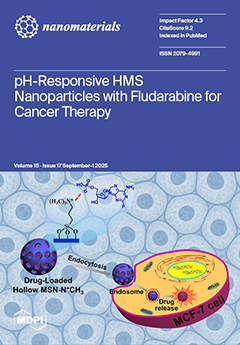Herbs offer people not just sustenance and housing but also serve as a key supplier of pharmaceuticals. This research is designed to assess the antioxidant and antidiabetic properties of green-produced zirconium dioxide and magnesium oxide nanoparticles (ZrO
2 and MgO NPs) utilizing extracts from unripe
Solanum trilobatum fruit. ZrO
2 and MgO NPs have garnered considerable interest owing to their superior bioavailability, lower toxicity, and many uses across the healthcare and commercial industries. Scientific approaches, such as diverse spectroscopic and microscopic approaches, validated the creation of agglomerated spherical ZrO
2 and MgO NPs, measuring between 15 and 30 and 60 and 80 nm, with a mixed-phase composition consisting of monoclinic and tetragonal phases for ZrO
2 and a face-centered cubic structure for MgO NPs. UV–vis studies revealed a distinct peak at 378 and 290 nm for ZrO
2 and MgO NPs, suggesting efficient settling through the phytonutrients in
S. trilobatum. The antioxidant capacity of ZrO
2 and MgO NPs was evaluated utilizing DPPH and FRAP reducing power assays. The diabetic effectiveness of ZrO
2 and MgO NPs was examined by alpha-amylase and alpha-glucosidase assays. The optimum doses of 500 and 1000 μg/mL were shown to be efficient in reducing radical species. Green-produced ZrO
2 and MgO NPs exhibited a dose-dependent reaction, with greater amounts of ZrO
2 and MgO NPs exerting a more pronounced inhibitory effect on the catalytic sites of enzymes. This work suggests that ZrO
2 and MgO NPs may attach to charge-carrying entities and function as rival inhibitors, therefore decelerating the enzyme–substrate reaction and inhibiting enzymatic degradation. Molecular docking analysis of ZrO
2 and MgO NPs with three proteins (2F6D, 2QV4, and 3MNG) implicated in antidiabetic and antioxidant studies demonstrated the interaction of ZrO
2 and MgO NPs with the target proteins. The results indicated the in vitro effectiveness of phytosynthesized ZrO
2 and MgO NPs as antidiabetic antioxidant agents, which may be used in the formulation of alternative treatment strategies against diabetes and oxidative stress. In summary, the green production of ZrO
2 and MgO NPs with
Solanum trilobatum unripe fruit extract is an efficient, environmentally sustainable process that yields nanomaterials with significant antioxidant and antidiabetic characteristics, underscoring their prospective uses in biomedical research.
Full article






